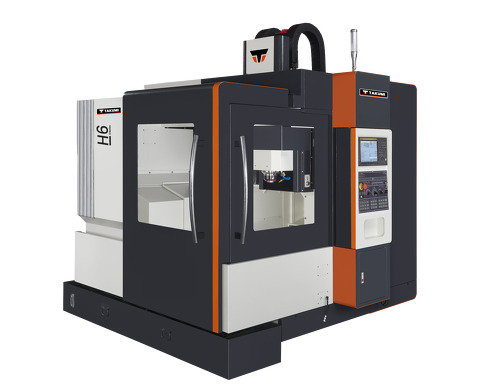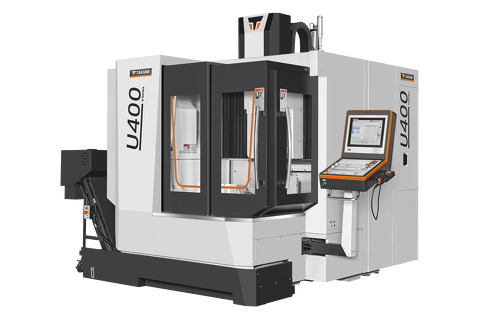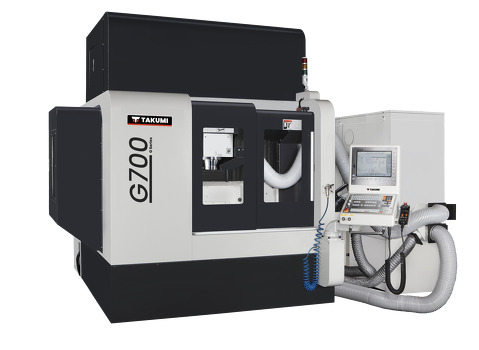- Machining center
- Control
- News & Media
- Company
- Blog
- Contact
How to Choose the Right Milling Machine for Your Business Needs
In today's competitive manufacturing landscape, selecting the right milling machines for your business needs is crucial for enhancing productivity and maintaining cost-effectiveness. According to a recent report by Technavio, the global milling machine market is projected to grow by over 7% from 2021 to 2025, driven by advancements in technology and increasing demand across various industries, including automotive and aerospace. With a myriad of options available, ranging from manual mills to sophisticated CNC machines, businesses must assess their specific requirements, production volume, and budget constraints. Understanding the features and capabilities of different milling machines can lead to significant improvements in operational efficiency and product quality, making the decision-making process all the more critical.

Factors to Consider When Selecting a Milling Machine: Efficiency, Cost, and Capability
When selecting a milling machine for your business, three key factors should be prioritized: efficiency, cost, and capability. The efficiency of a milling machine directly impacts production speed and output quality. A machine that operates at high speeds while maintaining precision can greatly enhance your workflow. Consider models with advanced automation features, as these can reduce operator errors and increase uptime.
Cost is another critical element in the decision-making process. While it's tempting to go for the cheapest option available, it's important to assess the long-term value of your investment. Opt for machines that offer a balance between an initial affordable price and ongoing maintenance costs. Remember to factor in potential energy consumption and replacement parts as these can accumulate over time.
Finally, you need to evaluate the capability of the milling machine in relation to your specific business demands. Different materials and complex designs may require specialized equipment. When choosing, consider the versatility of the machine and whether it can handle future projects as your business grows. Look for testimonials or case studies to gauge how well a machine has performed in settings similar to yours.
Understanding Different Types of Milling Machines: CNC vs. Manual and Their Applications
When choosing the right milling machine for your business, understanding the key differences between
CNC (Computer Numerical Control) and manual milling machines is essential. CNC machines are ideal for
high-precision tasks and
large-scale production due to their automation
capabilities. They utilize computer programming to control the movement of tools, ensuring consistent quality
and efficiency. In contrast, manual milling machines offer greater flexibility for small, custom jobs where
quick adjustments are necessary.
Tips: Consider your production volume and complexity when deciding
between CNC and manual machines. If your operations require high volumes of the same part, CNC is likely your
best bet, as it reduces cycle times and the risk of human error. Conversely, if you often handle varied or
bespoke projects, a manual milling machine may provide you with the adaptability you need.
Additionally, assess the types of materials you will be working with. CNC machines can often handle a
wider range of materials and provide better finishes, while manual machines might be more limited in
capability. Always evaluate your current and future needs to ensure that the milling machine you choose aligns
with your business growth.
The Role of Precision in Milling: Why Tolerances Matter for Your Business
When selecting a milling machine for your business, precision should be a top priority, especially as industries continue to evolve. The demand for micro components and tight tolerances in areas like medical device manufacturing underscores the importance of precision in machining processes. Recent advancements in machining technologies have allowed manufacturers to produce more complex shapes and work with a variety of materials, enhancing their ability to meet specific business needs.
Consider the implications of tolerances on your production goals. In high-stakes fields such as medtech, even a slight deviation can result in significant setbacks. Companies that focus on precision machining are increasingly integrating advanced CNC technologies to cater to these stringent requirements. The acquisition of precision machining firms signals a trend towards stronger capabilities in handling demanding specifications. Hence, investing in a milling machine that guarantees high accuracy can provide a competitive edge in today's rapidly changing market.
Precision in Milling: The Importance of Tolerances
This chart represents the frequency of different milling tolerances used in precision machining. Understanding these tolerances is crucial for businesses to ensure the quality and accuracy of their milling processes.
Market Trends in Milling Machine Technology: Innovations and Future Directions
In recent years, the milling machine market has experienced significant advancements driven by technological innovations and evolving industry demands. According to a recent report by MarketsandMarkets, the global milling machine market is expected to reach USD 21.93 billion by 2025, growing at a CAGR of 6.89% from 2020. This growth is largely attributed to the increasing automation in manufacturing processes and the development of smart machines, which enhance productivity and reduce operational costs.
Moreover, the push for sustainability has led to the emergence of eco-friendly milling machines that utilize energy-efficient technologies. A study by ResearchAndMarkets highlights that the adoption of CNC milling machines with advanced features, such as IoT connectivity and predictive maintenance capabilities, is reshaping industry operations. These innovations not only improve the precision and efficiency of milling processes but also enable businesses to stay competitive in a rapidly changing market landscape. As manufacturers embrace these trends, understanding the technological advancements in milling machines becomes crucial for selecting the right equipment to meet specific business needs.
Calculating ROI: How the Right Milling Machine Can Improve Your Bottom Line
When investing in a milling machine for your business, understanding the potential return on investment (ROI) is crucial. The right milling machine can significantly boost productivity, enhance product quality, and reduce operational costs. By selecting a machine that aligns with your specific needs, you can minimize downtime and maximize efficiency, resulting in a more profitable operation. Evaluating the features, speed, and versatility of various models can help you make an informed decision that pays off.
Moreover, consider the long-term impacts of your choice. A high-quality milling machine may have a higher upfront cost, but its durability and reliability often translate to lower maintenance costs and fewer disruptions. Additionally, the ability to produce precision components with fewer errors can lead to enhanced customer satisfaction and repeat business, further improving your bottom line. Emphasizing ROI during the selection process ensures that your investment not only fulfills immediate requirements but also aligns with the strategic goals of your business.
How to Choose the Right Milling Machine for Your Business Needs - Calculating ROI: How the Right Milling Machine Can Improve Your Bottom Line
| Feature | Specification | Estimated Cost | Expected ROI (%) | Payback Period (Months) |
|---|---|---|---|---|
| Type of Milling | CNC Milling | $50,000 | 30% | 12 |
| Table Size | 48" x 12" | $45,000 | 25% | 14 |
| Motor Power | 10 HP | $40,000 | 20% | 16 |
| Precision | ±0.001" | $60,000 | 35% | 10 |
| Software Compatibility | CAD/CAM | $55,000 | 28% | 13 |
Related Posts
-

7 Key Benefits of CNC Machines That Can Revolutionize Your Manufacturing Process
-

Essential Checklist for Choosing Your Perfect 3 Axis Milling Machine
-

Ultimate Comparison of Top Providers for Best CNC Precision Machining
-

Discover How Best Precision Machining from China Leads Global Manufacturing Excellence
-

7 Secrets to Finding the Best CNC Precision Machining Suppliers Worldwide
-

Ultimate Guide to Best 5 Axis CNC Milling Machine Comparison for International Buyers



